Plasma names can be just plain confusing, and the product known as Liquid Plasma is no exception. Dr. Chris Gresens is here to explain what it is and why Liquid Plasma might be just perfect for your facility.

Dr. Chris Gresens
Here Comes Liquid Plasma !
Into this sea of confusing names comes another product with a far simpler name: Liquid Plasma. This is a product that has one very specific indication, but it is easily confused with other plasma products that sound similar. Dr. Chris Gresens deals with these questions all day, every day. He is will help you understand plasma products in general, and why Liquid Plasma just might be the perfect product for your transfusion service!

Dr. Chris Gresens
Here Comes Liquid Plasma !
Into this sea of confusing names comes another product with a far simpler name: Liquid Plasma. This is a product that has one very specific indication, but it is easily confused with other plasma products that sound similar. Dr. Chris Gresens deals with these questions all day, every day. He is will help you understand plasma products in general, and why Liquid Plasma just might be the perfect product for your transfusion service!
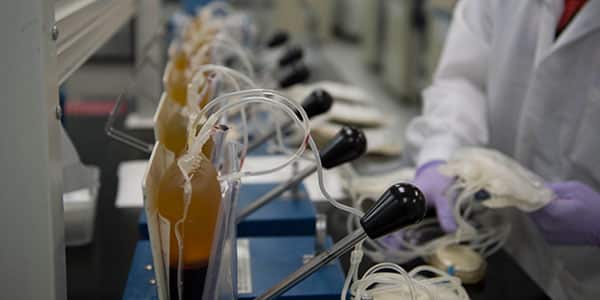
About My Guest:
Dr. Chris Gresens is the Medical Director for Vitalant’s North and West Divisions. He graduated from the UCLA School of Medicine in 1991, where he remained for his residency in anatomic and clinical pathology and fellowship in blood banking/transfusion medicine. He is board certified in AP, CP, and BB/TM. In 1996, immediately after completing his residency and fellowship, Dr. Gresens joined BloodSource (which in 2016 became part of Vitalant). He holds the position of Clinical Professor at the California Northstate University College of Medicine.
Dr. Gresens has received numerous awards for work in his field. His professional interests and expertise include consultations involving complex problems related to transfusion medicine and patient blood management as well as the establishment of modernized blood banks in resource-challenged countries throughout Africa and Eastern Europe. Dr. Gresens enjoys life in Sacramento, California with his wife, son, and daughter.
FREE Continuing Education!
This podcast episode offers a FREE continuing education activity where you can earn two different types of credit: 1 AMA PRA Category 1 CreditTM, or 1 ASCLS P.A.C.E.® Contact Hour (including Florida Clinical Laboratory Credit). This activity also may be used to fulfill Lifelong Learning Continuing Certification requirements for the American Board of Pathology.
To receive credit and review the accreditation information and related disclosures, please visit Transfusion News Continuing Education on Wiley Health Learning.
Please note: Continuing education credit is available for two years from the date this episode was released. In other words, you will no longer be able to claim credit for this episode after March 9, 2024.
Further Reading:
- Feb 2019 America’s Blood Centers “Blood Bulletin”: Li M and Gresens C. The Appropriate Use of Liquid Plasma. Blood Bulletin Vol 19, No 1
Thanks to:
- Dr. Daniela Hermelin, Associate Editor (Primary author, continuing education materials); Follow Daniela on Twitter for fantastic #blooducation!
- Dr. Jessica Hudson, Assistant Editor (transcript review).
- Samantha Chaffin, Design and content consultant
Music Credit
Music for this episode includes “Cuando te invade el temor” and “Reflejo,” both by Mar Virtual via the Free Music Archive. Click the image below for permissions and license details.




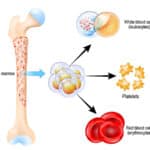

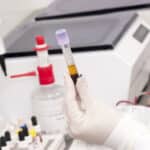



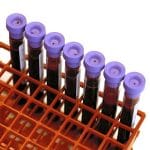

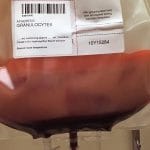
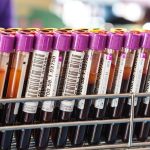
Thanks for a great discussion, Joe. The focus of this podcast was on using liquid plasma for trauma patients. My medical center is not a trauma center but has a very high volume L&D unit and as such postpartum hemorrhages are not a rare event. Do you or Dr. Gresens have any thoughts re: whether there’s a role for liquid plasma in severe postpartum hemorrhage management?
It was mentioned that FFP may pose less risk of TA-GVHD than liquid plasma as freezing destroys lymphocytes. Are there any potential pathogens that are destroyed through freezing? In other words, is the risk of transfusion transmitted infection potentially greater with liquid plasma than with FFP?
Hi Bruce. I can’t think of any evidence suggesting that there is any more likelihood that a pathogen will be transmitted via Liquid Plasma as compared to frozen plasma. Dr. Gresens may have a different view, but I’m not aware of any increased risk.
-Joe
Along that line with post partum hemorrhage, as a flight service carrying whole blood (O+) and about to carry A+ Liquid plasma (there are a lot of “+” signs going on here) the issue is not if but when a post partum hemorrhage is encountered, obviously a patient of child bearing years, should consideration of getting O- PRBC’s and if at all possible AB- FFP be pursued over the products we carry?
This scenario would more likely be at a critical access hospital with marginal blood supply resources.
Hi Brian,
I understand your concern for giving RhD-positive products (including Liquid Plasma) to child-bearing age females outside of the hospital. This is an ongoing debate, and people come down on different sides of it (see, for example this article in the May 2022 Vox Sanguinis, where the authors postulate that HDFN resulting from using RhD-positive whole blood universally would only happen once every 5.7 years!). As Dr. Gresens mentioned, the lysis of RBCs that we rely on to make the RhD type of frozen plasma products like FFP of PF24 largely irrelevant is not the case with LP. The problem is that we just don’t know what the risk is, though we THINK it’s really small. Again, I can’t answer this question for your particular facility, because reasonable people disagree. I think the majority feel that the risks are low, and they tend to only utilize RhD-positive products for out-of-hospital transfusions, but that is not universal.
Sorry I can’t be more specific, but that is a local medical decision.
Joe
good information and nice narration both Dr. Chris and Mr. Joe